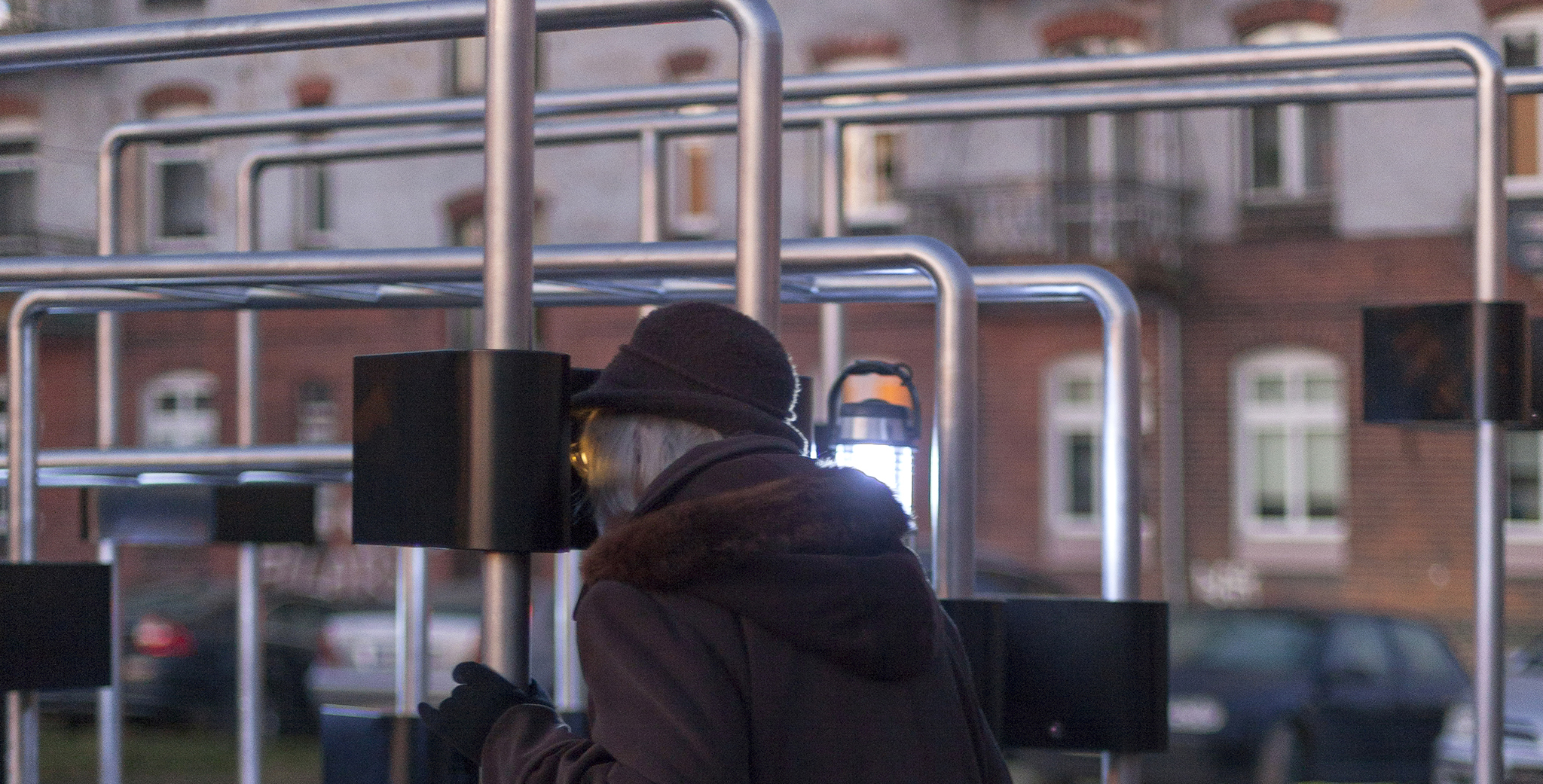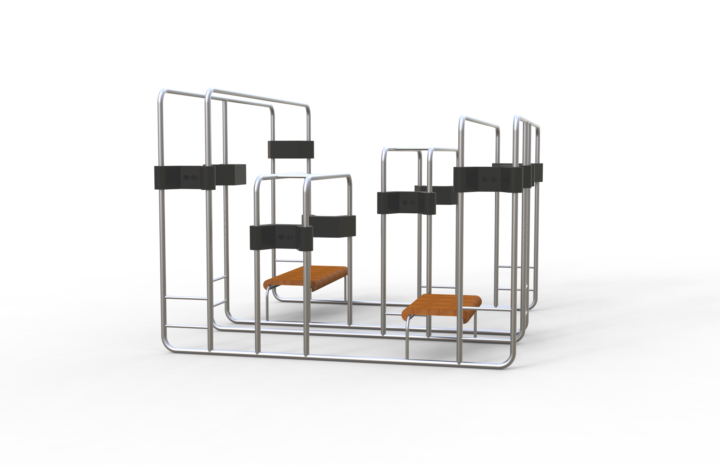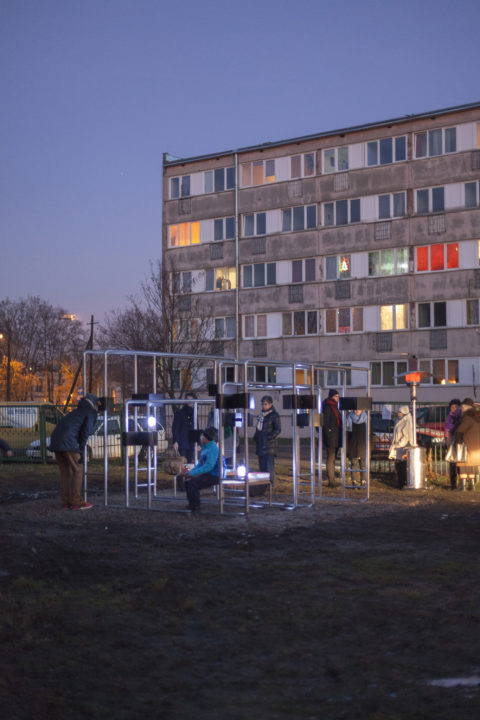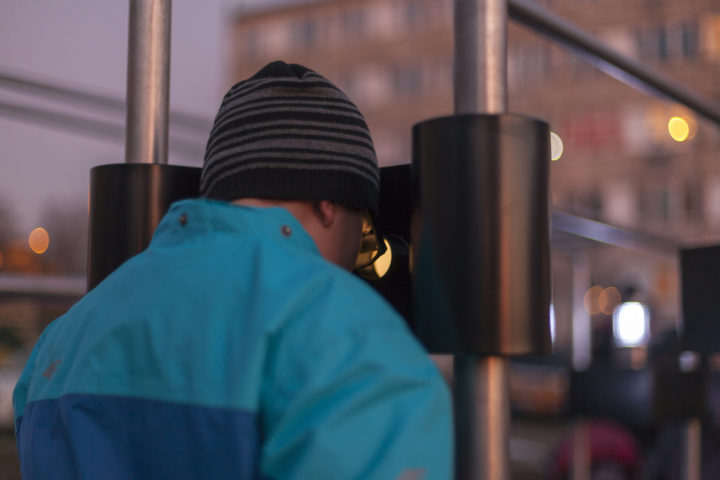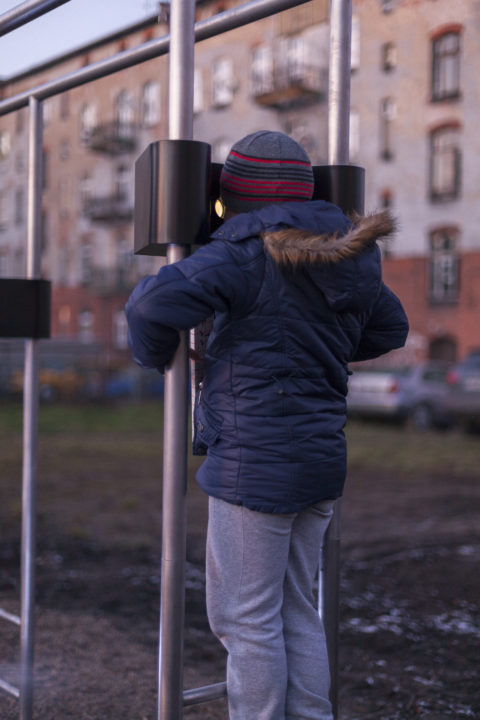The project is based on a concept of a detached building — an outdoor stereostopic gallery. Ten audiovisual points were placed on a steel frame. Through holes the users can view illuminated stereoscopic images (what gives a three-dimensional effect) while listening to the recordings. The points are placed at different heights so that they are accessible to the largest possible number of people. Children need to climb up a few levels to unfold all the stories — it is an element of fun. The construction of the installation is self-supporting and allows for any content changes in case of temporary exhibitions.
The most of city residents treat Brochów as one of the poorest districts of the city, dangerous suburbs or urban bed room. However, our field studies and research revealed a hidden aspect of Brochów, which is a nice town with a fascinating, lively history, rich cultural heritage and beautiful architecture. Few people know that it had one of the first trolleybus net works in Europe or one of the very first concepts of the garden city. In the 1930s the district had its own popular outdoor swimming pool, a cinema and a cultural centre with orchestras playing on a regular basis. That part of Brochów exists today only in old photographs, an overview of the decaying buildings or in memory of residents who willingly share their memories. The stories of their lives, habits and favourite places completely changed our perception of the place as we filtered Brochów through hundreds of photographs, family histories and events. We thought that this whole discovery process of a seemingly known place, putting together various scraps of history and creating a filter that allows you to look at the city in a different way, may be the subject of our project. We called it ‘urban archeology’. Thanks to the interactive object representing different places, we have created a virtual map of Brochów. It works on the imagination, reconstructing the district in the consciousness of the person who looks at it. With the help and support of the residents we present not only old photographs, but also specially recorded stories, contemporary documentation of sites and profiles of today’s residents. It all has a huge impact on our project which is not longer seen as an initiative brought from the outside, but it includes the voice of the local community.
